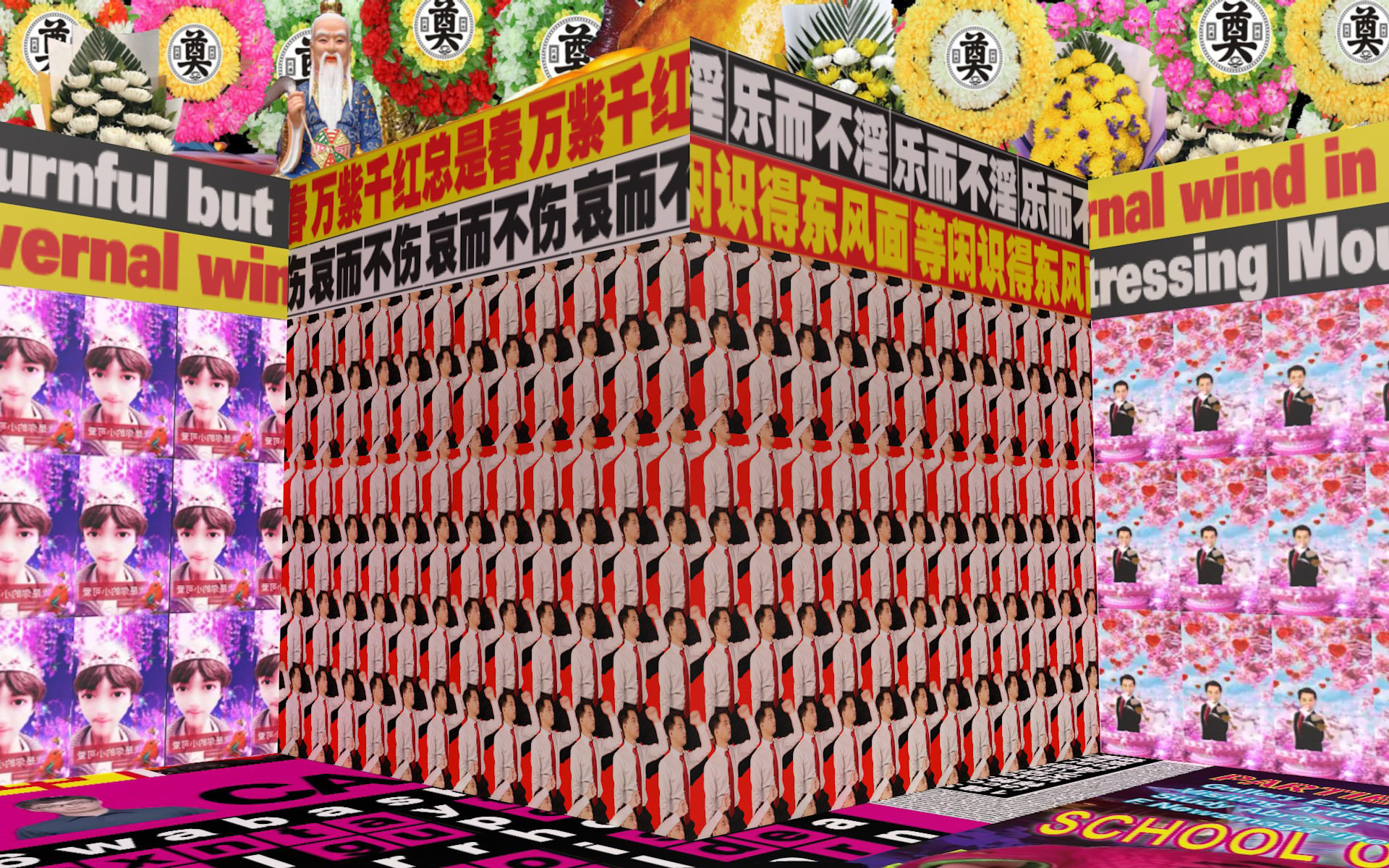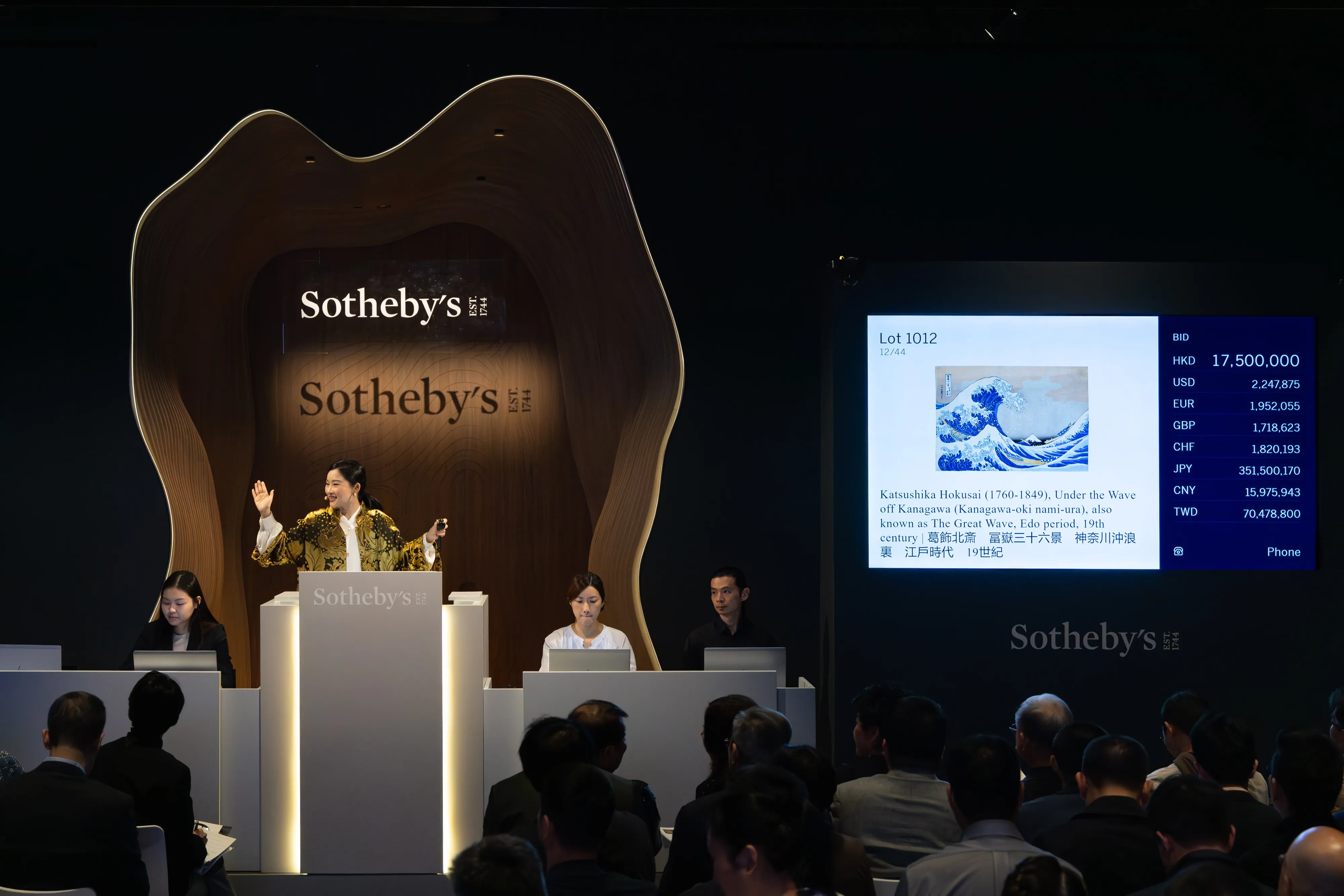China’s Digital Renaissance is a series exploring new currents in Chinese contemporary art, created in partnership with East West Bank. This article centers on the work of Dabeiyuzhou, an emerging artist whose work spans both futuristic technology and Chinese tradition.
Dabeiyuzhou, whose real name is Lin Kunhao, is a fast-rising figure in the world of digital art. The Xiamen-based artist is known for his NFT productions that explore intersections of technology, art, and culture – his fusion of futuristic motifs with Chinese tradition has earned him the nickname ‘Oriental Cyborg.’
“I think it’s the artist’s responsibility to explore all the possibilities of art, including the possibilities within the medium itself,” Dabeiyuzhou tells RADII.
Dabeiyuzhou was born in Fujian province on the southeastern coast of China, a region known as a bit of a religious melting pot. He admits that the traditional practices of Buddhism played a big role in his early life at home, where his mother was a pious Buddhist.
That influence is present in his moniker — which is a reference to the famous ‘Great Compassion Mantra’ — as well as in some of his most recognized works featuring AI-generated Buddhas.
However, Dabeiyuzhou’s career didn’t start with AI tools. His first entry points were through video game art and jade carving, before he moved back to Fujian province and transitioned into digital art.
Now his unique style is catching on with global audiences. His work bridges a gap between tradition and technology, blending Buddhist motifs with cybernetic visuals, and ultimately envisioning a future of complete human-computer synergy.
“Everything created on a computer is built on a common language of 1s and 0s,” he says. “Technology is the most effective way to tear down the ‘Tower of Babel’ that separates us.”

Dabeiyuzhou created his Parallel Futurism series between 2015 and 2018. The project represents an early effort to combine futuristic and spiritual imagery – amidst dizzying advancements in AI, Dabeiyuzhou wanted to explore the ‘god-like,’ omniscient nature of the technology.
The series’ Chinese name, Fangfu Weilai, is a double entendre. As Dabeiyuzhou describes, it can mean both “similar to the future” and “mimicking Buddhas in the future” (mofang foxiang 模仿佛像).

His iconic Virtual Butterfly Project, on the other hand, is steeped in Daoist philosophy.
Since 2018, Dabeiyuzhou has created more than 10 million virtual butterflies. He created the butterflies using generative adversarial networks and AI algorithms, and from there, hand-picked 3 million of them, each with a totally unique color and pattern.
“Butterflies hold special significance in Chinese culture,” he says, referencing the famous dream of classical Daoist philosopher Zhuangzi. “They’re symbols of dreams, and of fantasy.”
He tells us that he usually gives away a digital butterfly whenever he does an exhibition or speech, and gifts one to RADII as we wrap up our interview.

In 2019, Dabeiyuzhou started to create the Text Gene Project, combining elements across text, image, and human voice interpretation.
The series has made headlines, with one piece, A Poetic Beach, being sold through Sotheby’s Metaverse auction ‘Natively Digital 1.2’ for $140,000. Dabeiyuzhou made waves as the first Chinese digital artist to sell a work at the auction.
To create the project, he assembled a massive text gene library. The library contains words pulled from a wide spread of books, as well as those submitted by visitors to Dabeiyuzhou’s website.
An AI algorithm randomly selects words from the library, and arranges them into new sentences to form modern Chinese poetry. Dabeiyuzhou picks his favorites from the newly-composed sentences, and uses them to compose a sonnet.
That human presence is still key. While Dabeiyuzhou appreciates the liberation that AI tools can offer, he believes human artistry can’t be replaced.
“AI doesn’t give itself orders, just yet,” Dabeiyuzhou tells RADII. “I still believe it’s just a tool to liberate creativity and labor.”
All images courtesy of Dabeiyuzhou
















